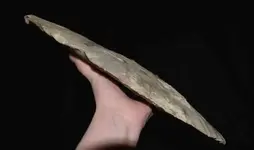hollARDog
Hero Member
- Joined
- Jun 18, 2022
- Messages
- 747
- Reaction score
- 1,249
- Golden Thread
- 0
- Primary Interest:
- All Treasure Hunting
This was recently found not far from me. Local historian and someone from UofA say it's a plow point and may be the largest ever found. Ever found where, I don't know. New territory for me and just wanted to share with y'all that know much more and may enjoy seeing it🤘


Amazon Forum Fav 👍
Last edited:
Upvote
3



 The wife found it on a local FB page. She is putting the baby down and I don't have FB.
The wife found it on a local FB page. She is putting the baby down and I don't have FB.

